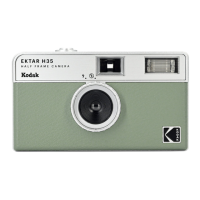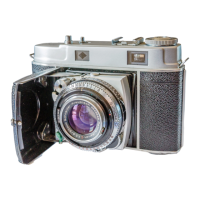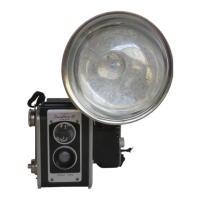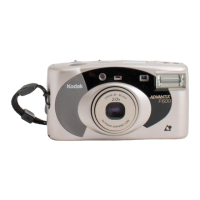DOUBLE
EXPOSURE
THERE
are
two
sets
of
half-masks: A vertical
pair
and a
horizontal
pair
(see Figure 48).
Their
purpose is to enable the recording
of
two
separate
halves
of
the picture
on
the same
length
of
film.
Be
sure to insert the mask
in
the
MASK
SLOT
with
PIN
forward,
as
in Figure
49.
The mask must be
pushed in
as
far
as
it
will
go.
With
the vertical masks, the same
person can appear in
the
picture
Fig.
48
twice by placing
him
so
that
his
image is on, say, the
right
-h
and side
of
the
vertical line etched in the reflex finder.
Expose the scene
with
the other
half
of
the
picture covered wi
th
the
left-hand vertical
half-mask. When exposing, note on
the
CAM-
ERA
FILM
METER
and the FRAME
COUNTER the
starting
and stopping
points of the scene.
With
the SHUT-
TER
LEVER
at
CLOSED,
wind
back
the film to the
starting
point
with
the
crank on the
EIGHT-FRAME
SHAFT
and the
EXPOSURE BUTTON
locked
in (Figure 50), being cautious
not
to
move the camera
or
tripod. Place the
person on the
other
side of the field,
change half-masks, set SHUTTER
LEVER
at
the
proper opening and
expose
the
scene
until
the
stopping
point
is reached.
Fig.
49
Since the image on the film
is
inverted and reversed
as
to
right
and
left,
we
suggest a rule to avoid confusion
as
to
which
side to cover. The
rule is:
Use
the
vertical half-masks
as
indicated by the reflex finder
image. This image is reversed,
so
you
don't
need to reverse your
thinking
at
the time
of
exposure.
If
the
subject is on the left side
of
52
MASK
SLOT

